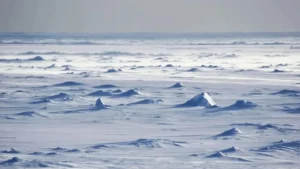Uttar Pradesh, a state known for its rich cultural heritage and diverse traditions, is also the most populous state in India. Among its many districts, one stands out for its significant contribution to the mining sector, particularly copper. This article delves into why Lalitpur is recognized as the “Copper City” of Uttar Pradesh.
An Overview of Uttar Pradesh
Uttar Pradesh, located in the northern part of India, is not only renowned for its vibrant culture and historical significance but also for its vast mineral resources. Covering an area of 240,928 square kilometers, it is the fourth largest state in India by area.
Districts and Divisions of Uttar Pradesh
Uttar Pradesh is divided into 75 districts and 18 divisions. It has 822 community development blocks, 350 tehsils (as of 2018), 17 municipal corporations, and 437 town panchayats. The smallest district in terms of area is Hapur (660 square kilometers), while the largest is Lakhimpur Kheri (7,680 square kilometers). The state’s geographical extremes are Saharanpur in the north, Sonbhadra in the south, Ballia in the east, and Shamli in the west.
Which District of Uttar Pradesh is Known as “The Copper State”?
Lalitpur district in Uttar Pradesh is known as the “Copper District.” This distinction is due to its significant copper deposits, particularly in the Sonrai region. These copper reserves make Lalitpur a crucial area for mining activities in the state. Additionally, Lalitpur is also noted for its uranium resources, further highlighting its importance in the mineral sector of Uttar Pradesh.
Why is Lalitpur Known as “The Copper State”?
Lalitpur is home to significant copper deposits, particularly in the Sonrai region. These deposits make it an important area for copper mining, contributing to the district’s nickname. The presence of these copper reserves has made Lalitpur a crucial player in Uttar Pradesh’s mining sector.
Other Mineral Resources
Apart from copper, Lalitpur is also known for its uranium deposits. The presence of this valuable mineral adds to the district’s importance in the mining sector and further solidifies its reputation as a mineral-rich region.
Economic and Industrial Development
The discovery and extraction of both copper and uranium have spurred economic and industrial development in Lalitpur. The mining activities have attracted investments and improved infrastructure, contributing to the overall growth of the district.




 Which Indian City is Known as the Footwe...
Which Indian City is Known as the Footwe...
 Which Desert is known as the Cold Desert...
Which Desert is known as the Cold Desert...
 Top-10 News Media Companies in the World...
Top-10 News Media Companies in the World...







